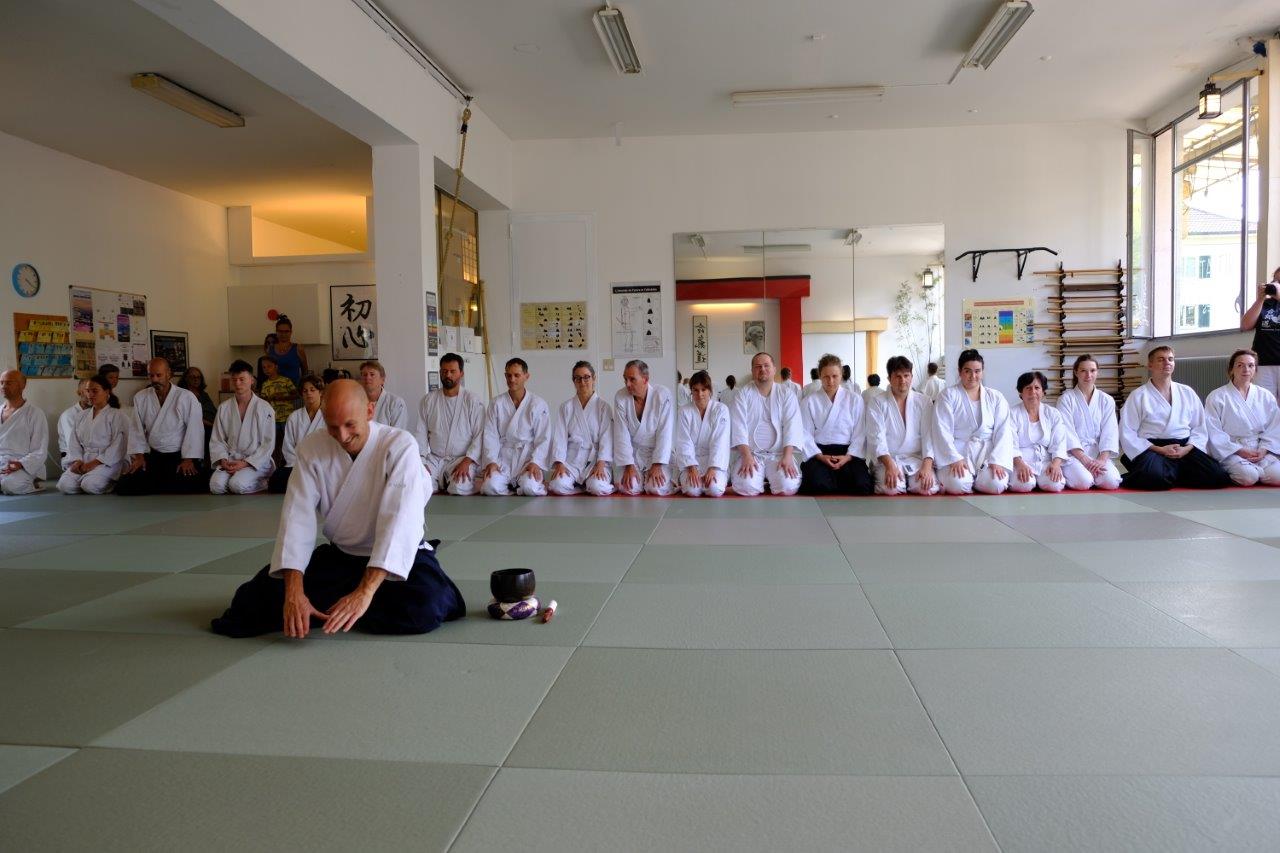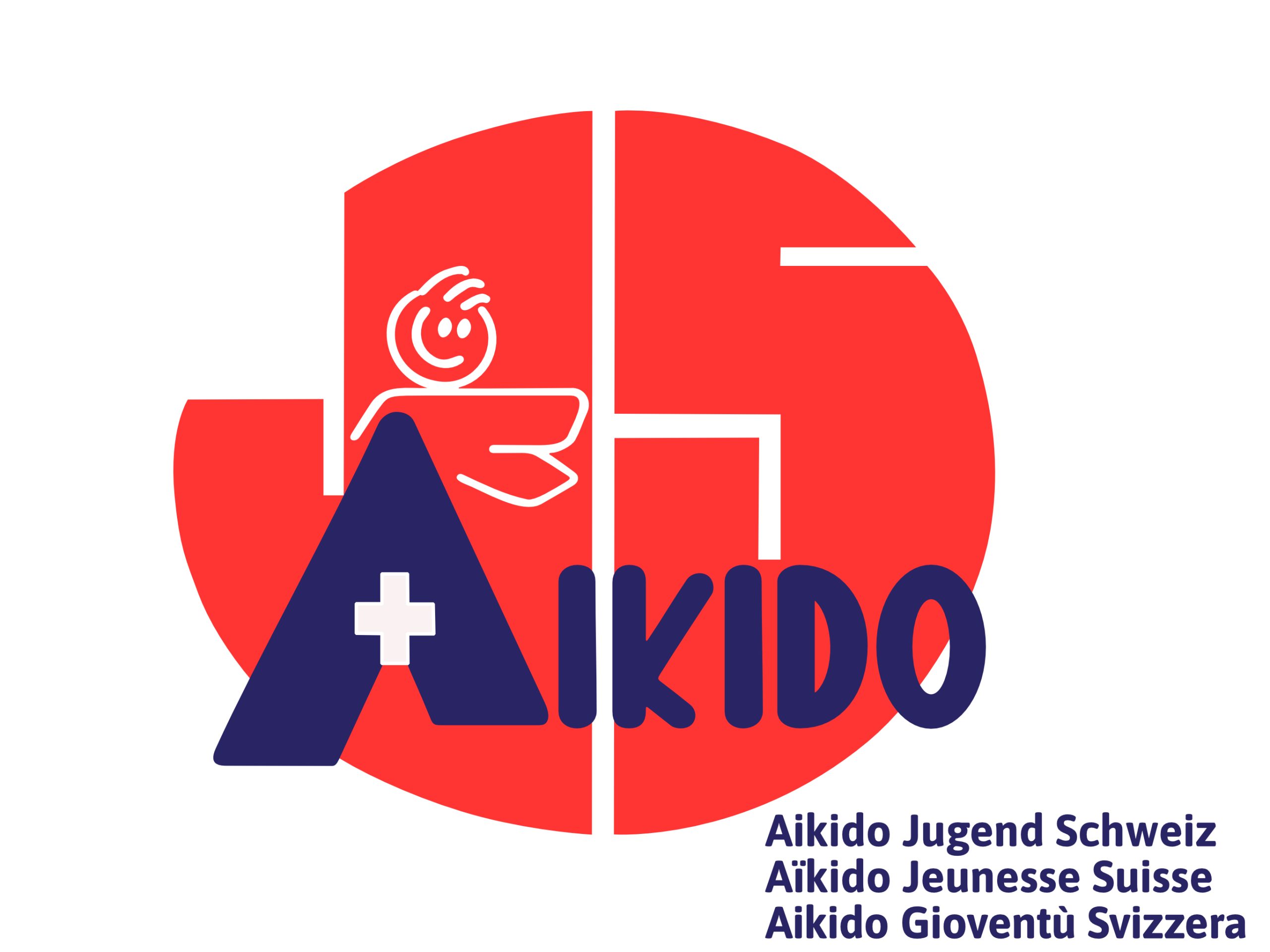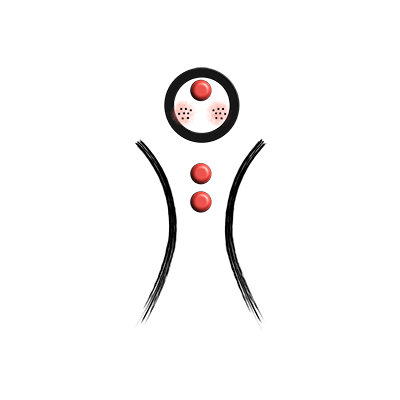
Aikido kids
Monday |
Tuesday |
Wednesday |
Thursday |
Friday |
Saturday |
|
17h00-17h45 5-7 y. old 18h00-19h00 8+ y. old |
17h00-17h45 5-7 y. old 18h00-19h00 8+ y. old |
Schools & 17h00-18h00 12+ y. old |
17h00-17h45 5-7 y. old 18h00-19h00 8+ y. old |
– | – |
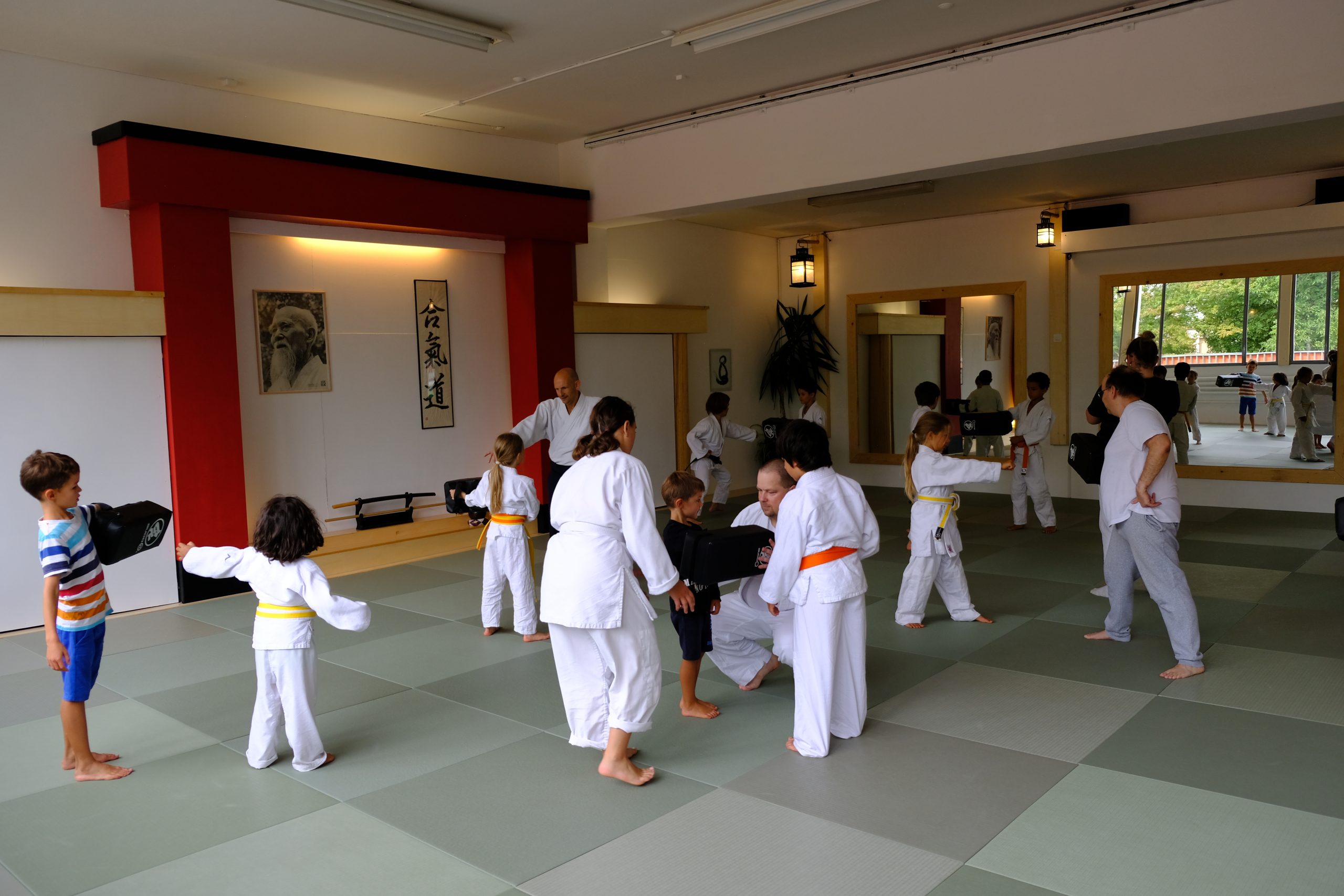
Aikido for children
5 to 14 years old
Aikido is a great way to promote a social behavior. As there are no competitions in Aikido, children learn much more about being together than comparing themselves to each other (in terms of performance, strength, etc.). In exercises with partners, they understand how to assume their responsibilities and respect their partners, respect their limits and those of others.
The practice of martial arts promotes the physical and emotional-mental development of the child. We attach great importance to balanced development at both levels. On the one hand, their coordination capacities (balance and reactivity) and their conditional skills (strength, endurance, flexibility, etc.) are enhanced in a fun way. On the other hand, the practice of a martial art builds self-confidence, increases concentration and requires discipline. Children training is suitable for children from 5 years old. Do not hesitate to contact us for more information or for a no-obligation test training.
More on Aikido for children
Aikido is a Japanese Martial Art based on circular movements intended to project and control the aggressor without damage. From a simulated attack, Aikido trivializes the aggression and leads the practitioner to an appropriate response: do not flee, face the aggressor before moving and dodging. Aikido techniques rely on flexibility and the use of the aggressor’s energy rather than physical strength. Practitioners develop a powerful self-defense system that is intimately linked to a set of principles and attitudes aimed at resolving conflicts in a calm and measured manner.
What are the educational values of Aikido?
“A perfect school for teaching, for experimenting and for the development of moral and physical values for young people, Aikido represents a complete method of education”
- Physically: the practice of this discipline improves health by a harmonious development of all parts of the body, increased flexibility, correction of attitude (spine), breathing control, relaxation and endurance.
- Technically: the study of movements requires the study of imbalance, knowledge and use of energy, development of reflexes. Remembering the different techniques is a fun memory training since it involves discovering mnemonic techniques for yourself.
- Morally: the respect of Bushido, code of honor and traditional morality of Japanese Martial Arts, and the particular spirit of non-violence characterizing Aikido, allow the practitioner to acquire the highest moral values such as: politeness, modesty, kindness, loyalty, loyalty, honor, courage and perfect self-control.
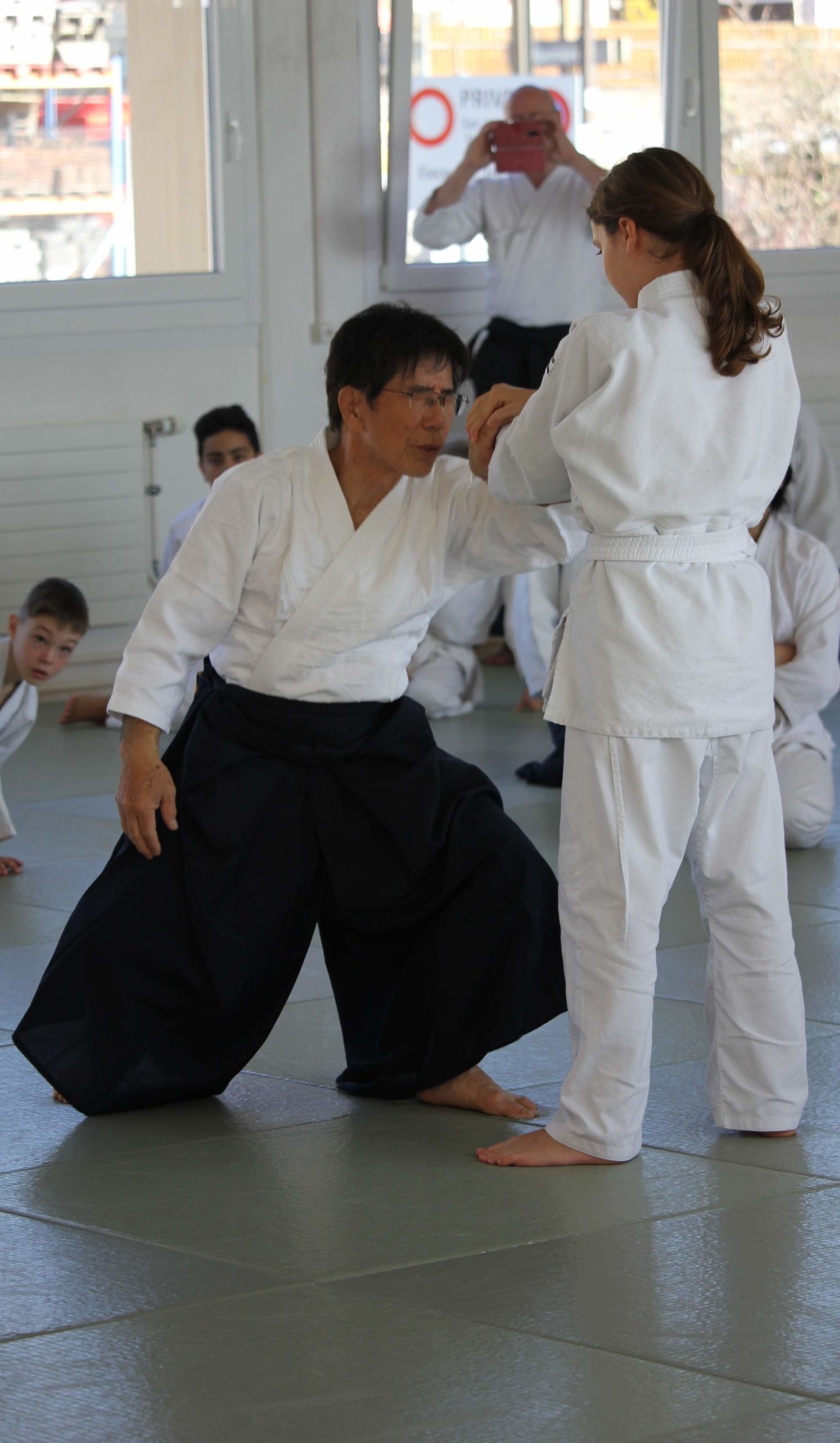
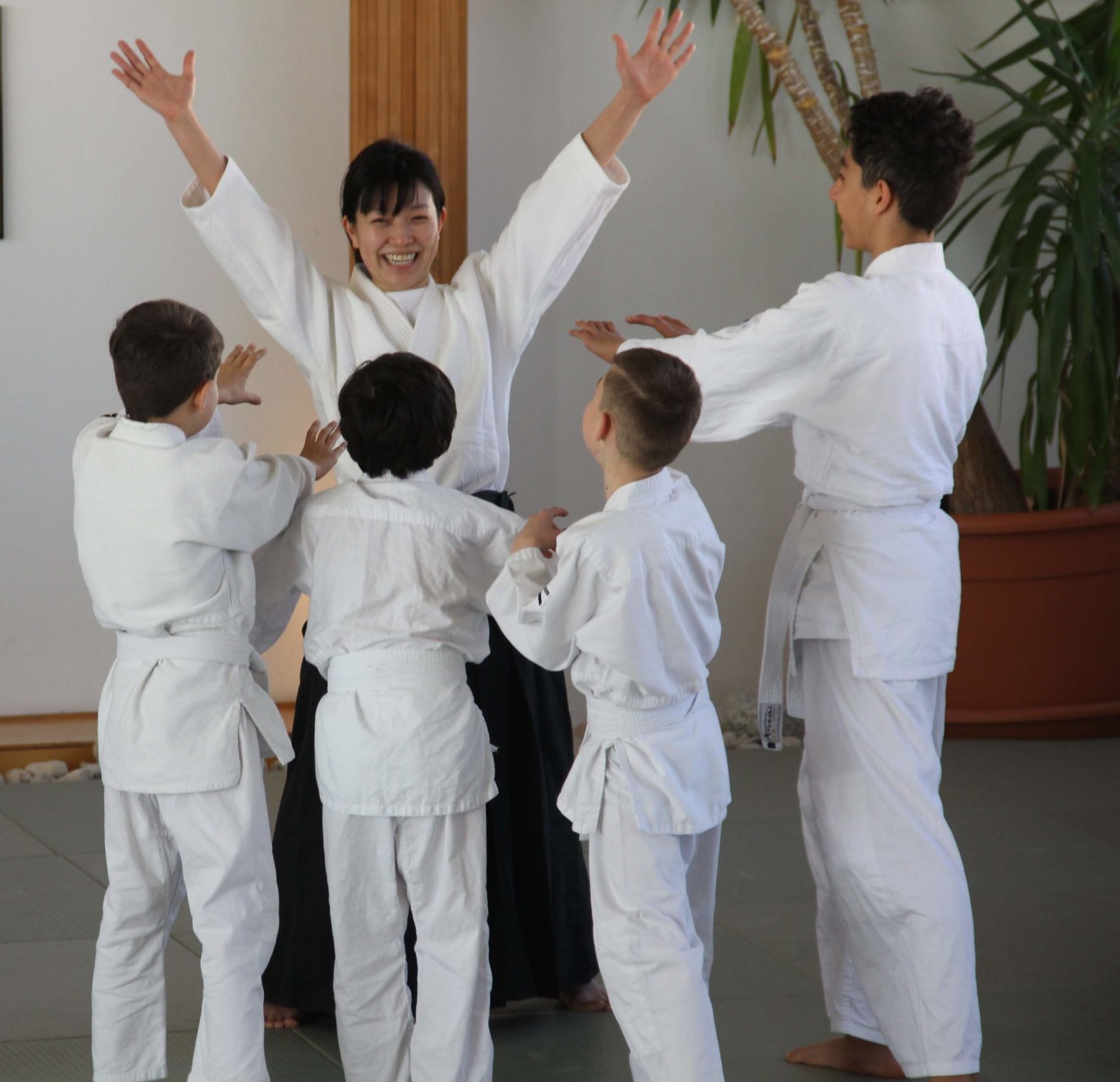
How often a week should you practice Aikido?
Aikido can be practiced once or several times a week in our schools. Regional, national or international courses are an opportunity to meet other (young) practitioners. Twice a week is pretty ideal.
What is necessary to practice Aikido?
You have to pay a monthly, quarterly, half-yearly or annual subscription – the subscription pays the school fees.
You need to acquire a training suit (AIKIDO-GI) colloquially called KIMONO with a white belt. Wearing the “hakama” (wide black pants) depends on the decision of the Dojo leaders.
What are the belts in Aikido?
There are two types of grades in Aikido:
- KYU (white belts): 10 different grades from 10th Kyu (beginners) to 1st Kyu (last white belt before black). The 10th, 9th, 8th and 7th Kyu exams are held at the dojo, the following grades are held during weekend courses. The technical director of the school is responsible for issuing these grades.
- DAN (black belts): the examination is regional, even national, and is recognized by Aikido Switzerland and the Hombu Dojo (world center of Aikido in Japan). You must be 16 years old to go for the first black belt exam.
What happens during a session ?
An Aikido session generally includes 3 stages:
- preparation (salute, meditation, breathing and warm-up): its purpose is to prepare the body, its joints and the mind for practice. It is important to arrive on time in class in order to participate to this phase.
- The actual training: study of the movements of Aikido. The teacher adapts the course to the level of the students and their age.
- the return to calmness: it is a privileged moment to review the movements learned and to calm one’s breathing before the final salute.
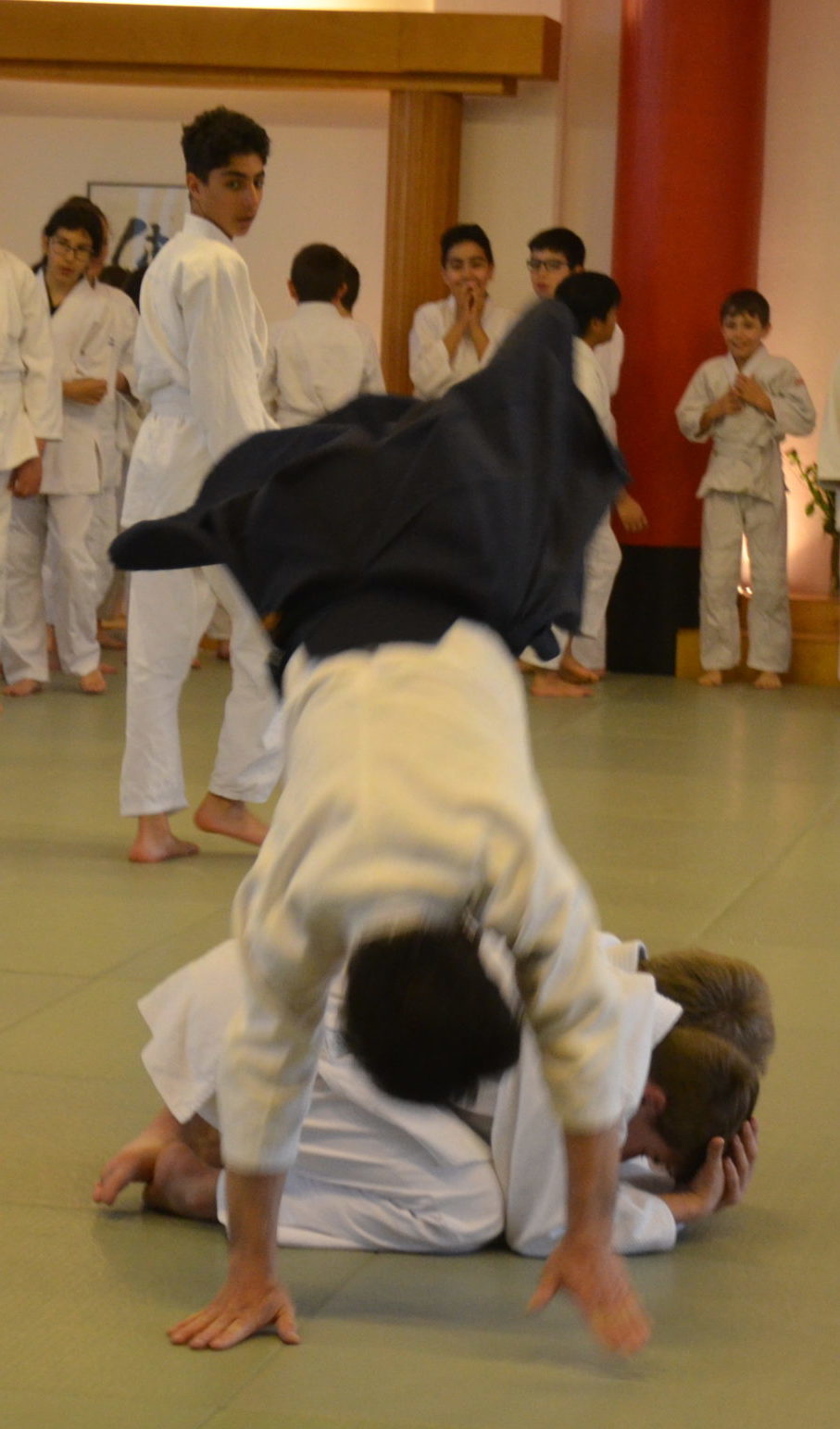
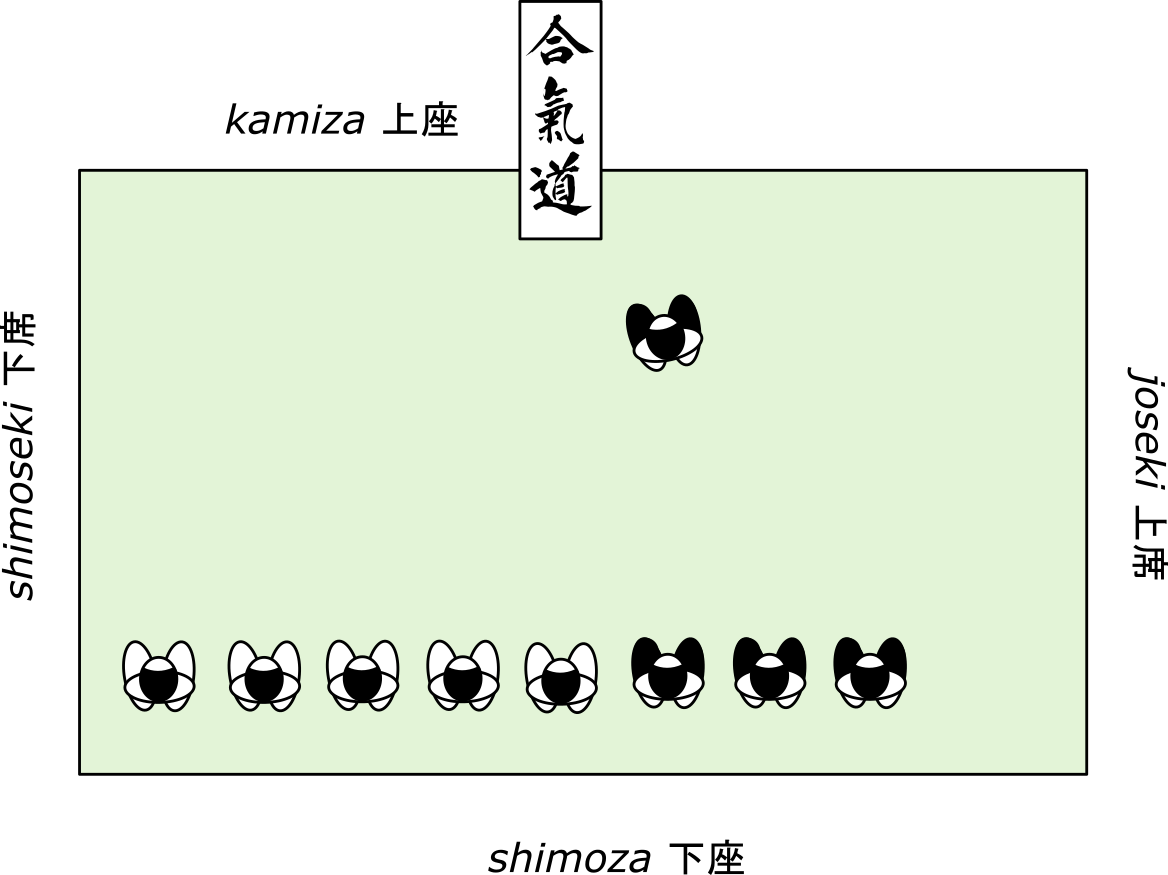
Why greet before and after each lesson?
- the first salute is towards the wall of honor (KAMIZA in Japanese). It is a sign of respect for oneself, the Universe and the founder of the discipline.
- the second salute is reciprocal between the teacher and the students, as a sign of respect and thanks for what the two parties have learned from each other.
What are the risks for my child?
Aikido is a discipline where very few accidents are recorded.
Are there any Aikido competitions?
Modern life contains enough competition, aggression, and crushing of the other by violence. The aim of Aikido is not to divide practitioners between winners and losers, strong and weak, but to give them the means to respond calmly, moderately and effectively to an aggression which, by definition, has no rule. There is no competition in Aikido.
Is the professor a graduate?
Our school in Biel isaffiliated with Aikido Switzerland (AS) for adults and Aikido Youth Switzerland (AJS) for kids, the national associations which link to Japan where the world organization of Aikido resides and respectively Jugend & Sport for the confederation program of sports promotion for young people in Switzerland. The KYU grades awarded in our schools are recognized throughout Switzerland and in much of Europe, the DAN grades (black belts) are recognized worldwide.
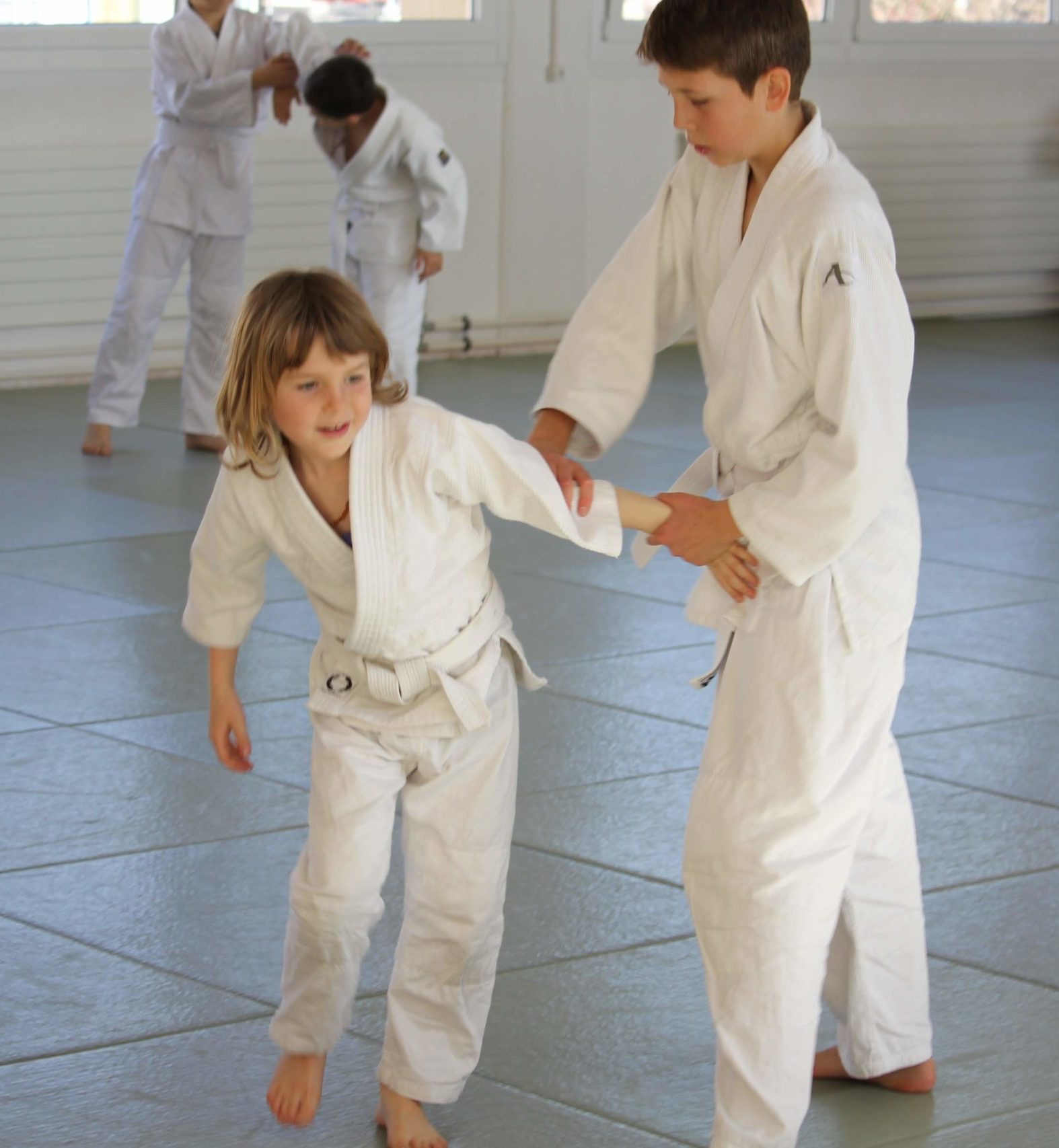
The association AJS brings together the largest aikido associations in Switzerland: Union Aikido Suisse (UAS), Association Culturelle Suisse d’Aikido (ACSA) and Aikido Switzerland (AS). Together, our mission is to promote aikido through a common approach to working with young people, particularly in the field of Youth + Sport (J+S).
Cool & Clean
Our Aikido school in Biel supports and carries further the values of the Cool and Clean program.
